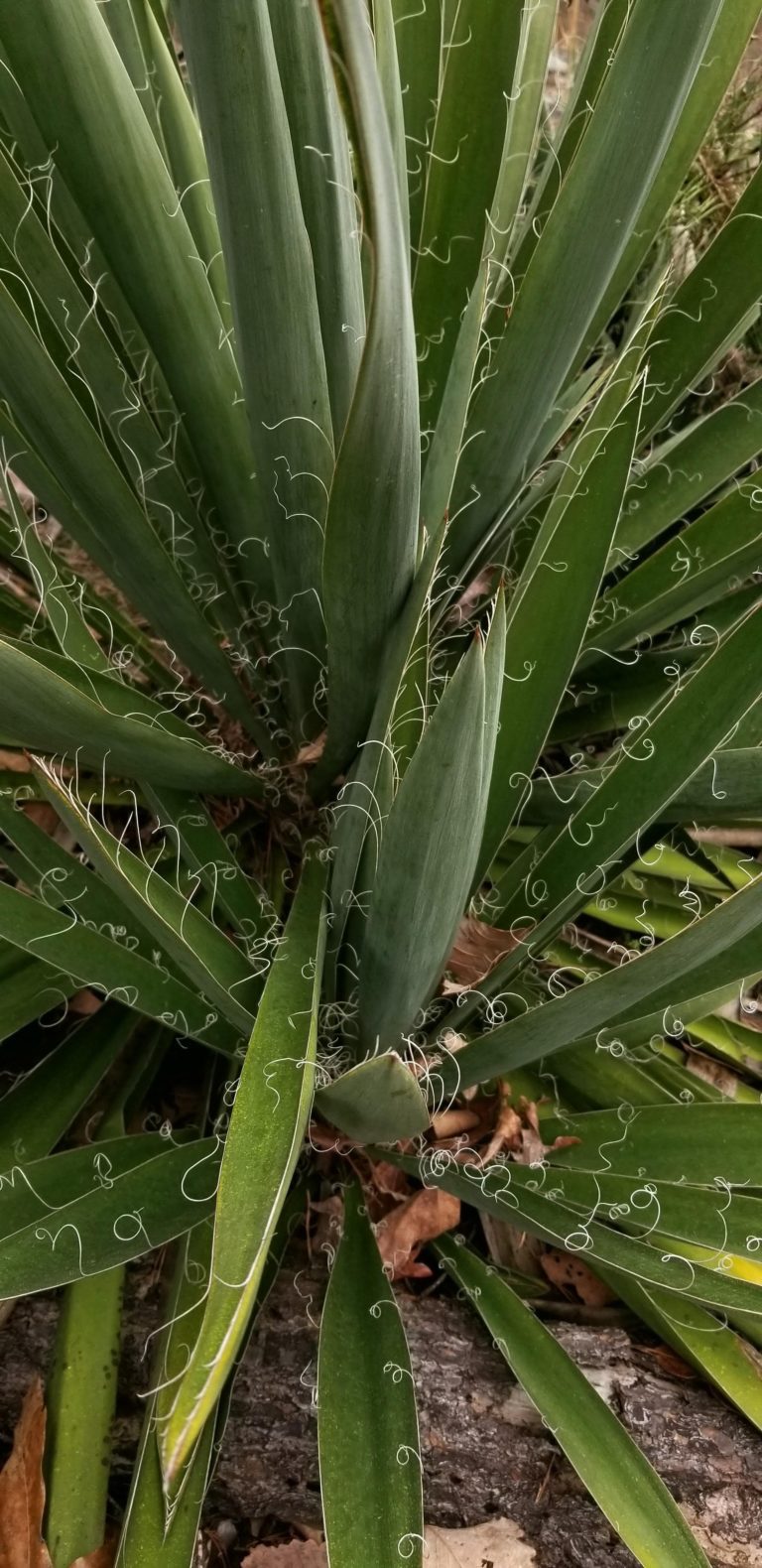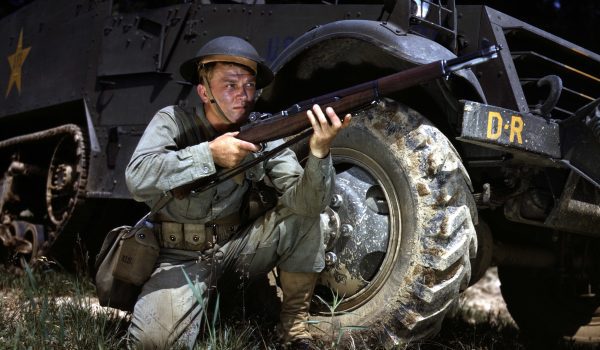Yucca filamentosa
Spanish bayonet, Adam’s Needle
Meet your neighbor!
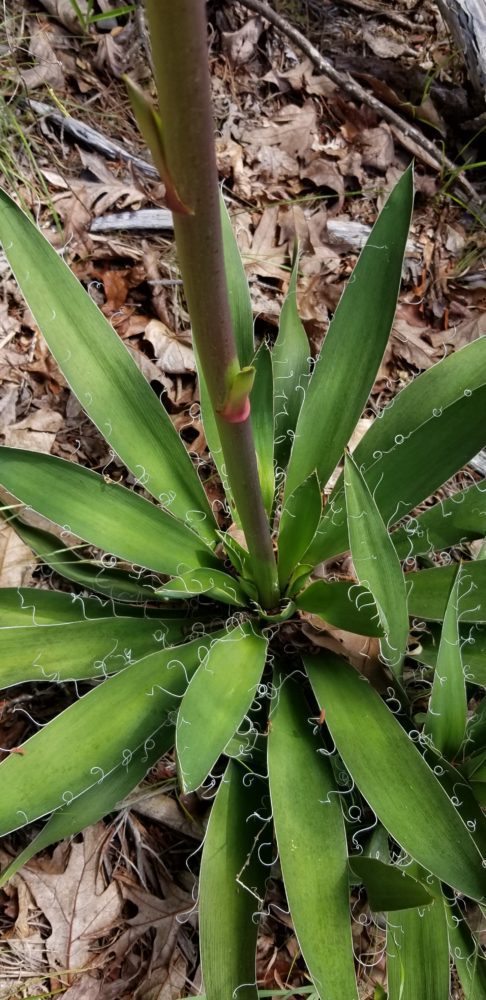
Walking down a trail in these mountains is as far from the desert as you can get. Lush green forests, forest floors carpeted in ferns, streams glistening with salamanders, neo-tropical birds singing summer songs.
The first time I saw a yucca growing out in the wild I was sure it was a non-native plant brought to this area by early settlers, maybe marking an old homesite. This rosette of sword-like leaves with a tall stalk in the middle looked more like it would be at home in a desert. Sometimes you just know “that is not a local”! It was intriguing to see this plant here in the mountains. Turns out the more I get to know yucca, the more intriguing it is. Isn’t it that way with our neighbors?

It turns out yucca is, in fact, a native plant to the southeast and to these mountains. It seems to have memories from generations long past of desert-like homes though. It certainly grows happily on some of our dry rock outcroppings sitting in a puddle of sandy soil. However, I have also seen it growing deep in the forest in a dappled patch of sun and, of course, in many folks’ yards.
Each sword leaf is edged by beautiful filaments of leaf fiber, curling in like ribbons. These are what gives it its scientific name yucca filamentosa. The tall stalk in the middle is a flower spire, which blooms every couple of years. This stalk lends the common names, Adam’s Needle or Spanish Bayonet.
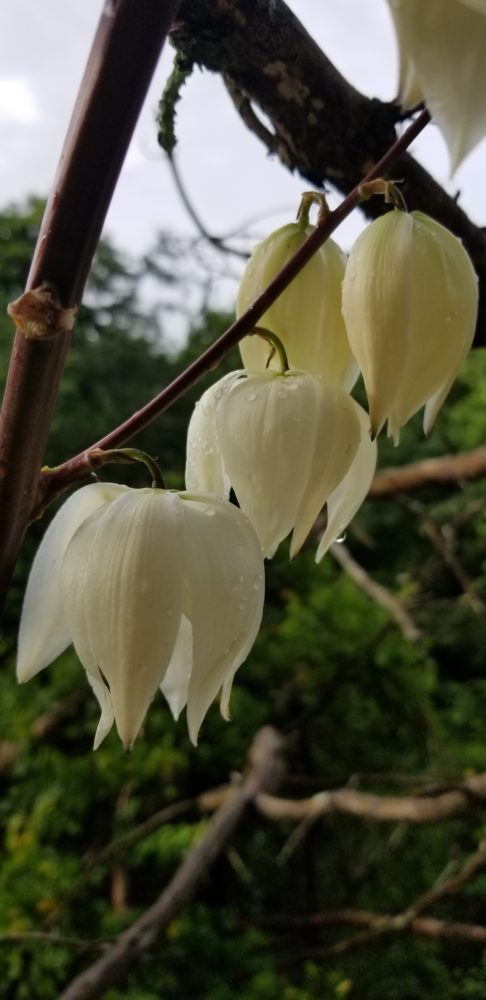
This beautiful white bayonet of flowers contains a bit of nature magic. Possibly the most fascinating fact about this plant is the exclusive relationship it has developed with the yucca moth.
The creamy white blooms open at night and calls to their one and only pollinator with a sweet fragrance. The female yucca moth heeds the call and comes prepared. She will not eat during her adult phase, she has more important things to do. She uses little tentacles to gather a pollen ball and hold it under her chin. She then flies to another plant and finds a flower to deposit that pollen ball in, ensuring there will be future yucca fruits to raise her babies in. Once she deposits the pollen, she lays her eggs in the ovaries of the flowers. When the flower fruits, the eggs hatch and use the seeds as their first food source. This relationship ensures pollination for the yucca plant and ensures a nursery for the yucca moth eggs. One cannot survive without the other. Now that is a good neighbor!
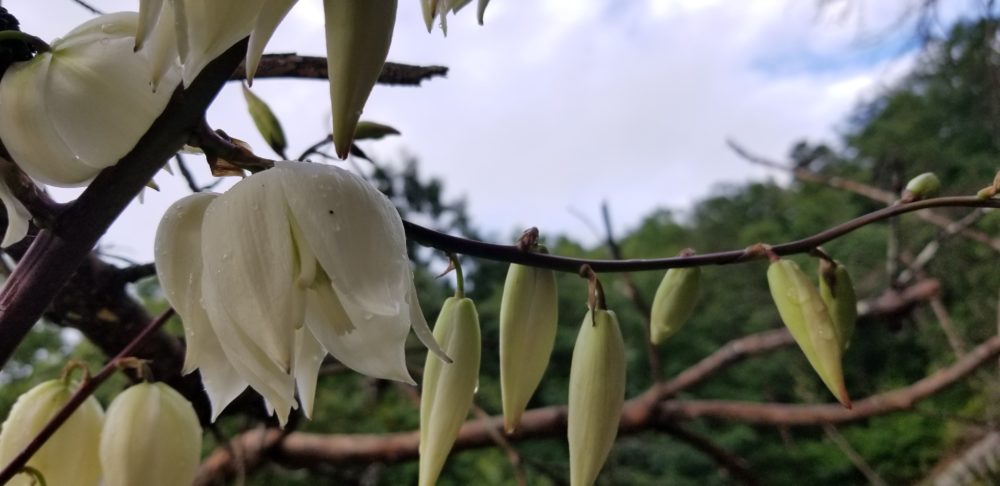
This interconnectedness, or symbiosis, is common in nature. John Muir said,”When we try to pick out anything by itself, we find it hitched to everything else in the universe.” It is why protecting one species often protects many species. When we take care of our neighbors, ultimately, we are taking care of ourselves.
And this neighbor has some hospitality to offer us as well. The flower petals and the stalks are edible when cooked properly. The leaf fibers make excellent cordage and the dried stalk can be used as a spindle in a friction fire starting set. Even the roots are useful, high in saponen, which is nature’s soap.
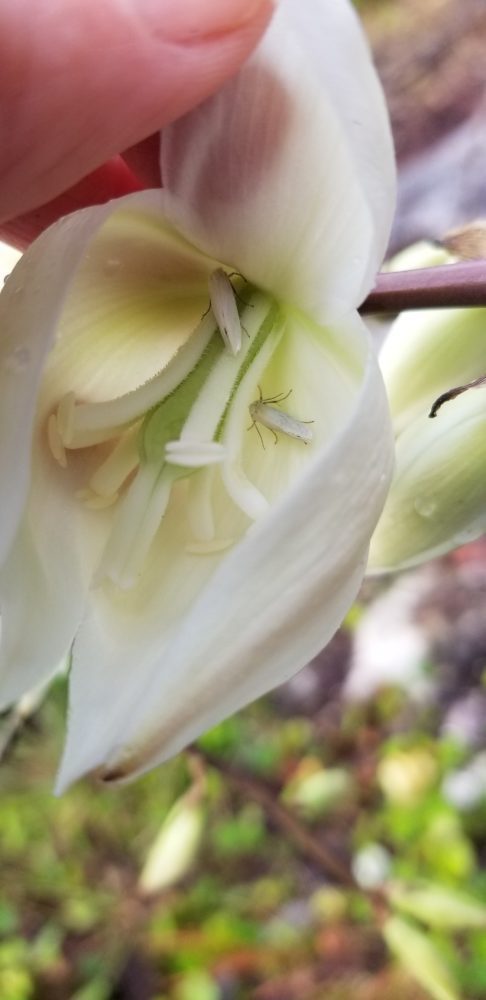
As for me, I am satisfied just enjoying my neighbor’s company and presence. Nice to meet you neighbor!
________________________
Read more Wild TR posts:

